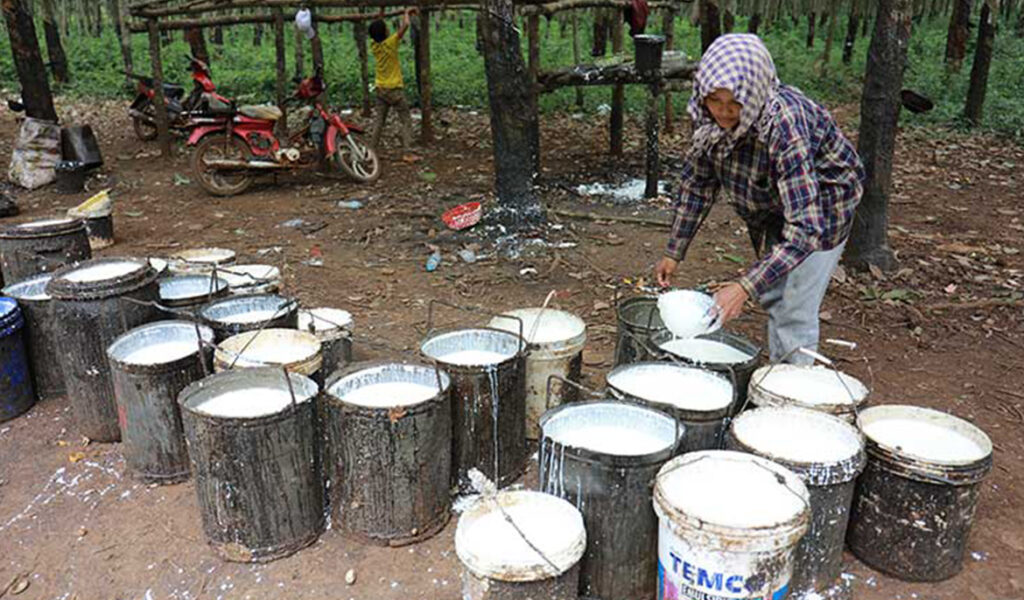Cambodia made more than $210 million in revenue from rubber exports in the first half year of 2024, an increase of about 8.6 percent over the same period of 2023, said a report of the General Directorate of Rubber on Wednesday
Khun Kakada, Acting-Director General of the General Directorate of Rubber of Ministry of Agriculture, Forestry and Fisheries (MAFF), said in the report that the revenue from rubber exports as of the first semester of 2024 was more than $213.4 million, up about 8.6 percent from $196.3 million over the same period of 2023.
Cambodia exported 140, 653 tonnes of dry rubber in the first semester of 2024, the report further added.
According to the General Directorate of Rubber, Cambodia has so far planted rubber trees in a total area of 407,172 hectares, in which the trees on 320,184 hectares, or 78.6 percent, are old enough to be tapped. The area of agro-industrial rubber is 226,840 hectares or 55.71 percent and the area of family rubber is 180,332 hectares or 44.29 percent.
“General Directorate of Rubber will continue to work hard to implement the plan to achieve good results, continue to cooperate with the Department of Agriculture, state-owned rubber plantations, economic land concessions, family rubber plantations, processing plants and purchasing office to promote rubber technology and rubber data collection,” Kakada said, adding, “It will continue to cooperate with national and international rubber associations in rubber research and development.”
Vice President of the Cambodia Chamber of Commerce (CCC), Lim Heng, told Khmer Times on Wednesday that the rubber market is still in good shape, with exports rising as well as harvesting. The price of rubber has also risen slightly, which can sell from $1,600 to $1,700 per tonne.
“For Cambodia, exports are possible and may have some profit, while Thailand and Malaysia are still losing (profits) because their original price is $1,800 per tonne. Therefore, market competition is also important in the international market,” Heng emphasised.
Nowadays, most of Cambodia’s rubber is exported, mostly through Vietnam to other countries. The Cambodian rubber market consists of China, Vietnam, Malaysia, Singapore, India and the EU.
“In future, we will have the opportunity to attract more investors in the rubber sector if the price goes up and there will be more rubber growers,” Heng said.
In relation to the rubber plantation, Heng also said the challenge, with a small number of thieves stealing rubber and there are people waiting to buy. It means that there is a conspiracy between buyers and thieves.
“This is another challenge that makes investors seem reluctant to do so. So, to attract more investors in the rubber sector as well as in the agricultural sector, local authorities should enforce strict laws against the thieves, which affects the investors.”
Thieves do not only steal rubber, but they also steal even mangoes, cashews, cassava, durian and other crops to sell, not to eat, Heng added.
It should be noted that last month, Dith Tina, Minister of MAFF, held a meeting with the officials of the General Department of Rubber and rubber investment companies to discuss ways to hold the 100th anniversary of the oldest rubber tree and the first national rubber tapping contest.
The celebration of the 100th anniversary of the oldest rubber tree in Cambodia and the rubber tapping contest will be held in November this year in Chup Rubber Plantation in Tbong Khmum province.



